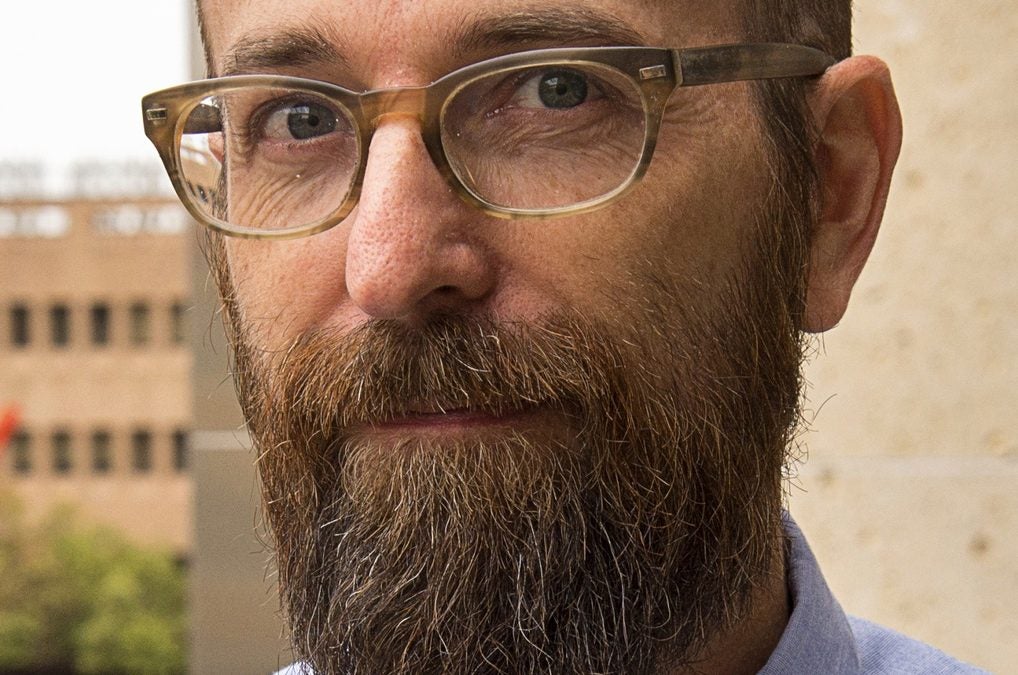
By Tracy Wuster, Assistant Professor of Instruction, Human Dimensions of Organizations
When I graduated from college, I was not sure what I wanted to do, but I knew I wanted to do something creative. Moving to a new city, I took the most creative job I could find that would pay the rent: parking lot attendant.[1]
To be fair, this job was at a university, where I had access to books, scholarly talks, and an environment where learning was in the air. Within a few weeks, I was promoted to the parking office due to a small, mildly creative improvement in how I organized parking receipts—along with my general competence with money.
From there, I was promoted three times in the next two years—ending with a new job I had created for myself called “Transportation Coordinator,” in which I wandered around campus solving problems with parking, signs, public transportation, and the like.
I think a lot about this job when thinking about creativity, which I now teach as a professor at the University of Texas at Austin. It was not a job in which creativity was expected, and in some cases, it was not rewarded. But it was a job in which I learned how to strategically employ creative solutions to improve the work we did and the quality of my own job.
Many students will graduate into jobs where creativity is not expected, but where smart creativity will help them to develop key skills, to make the job interesting, and to stand out as employees who should be promoted to positions where creativity is expected. Not all of our students will graduate into jobs where creativity is built into the culture—like Pixar, Google, 3M, or IDEO—but all of our students will graduate into careers where they can use creative problem solving to improve their company and themselves.
It’s been decades since I have sold a parking pass, designed a sign, or written a ticket—but the creative lessons I gained in the parking office have stayed with me.
A note on “creativity”
When we think “creative,” we often default to artistic expression, which makes sense because our culture links creativity to the explicit expressions of artistic imagination. Those are places where people highlight their creative work and where we can see imaginative creativity on the page, the screen, and the canvas.
But we shouldn’t fall into the trap of thinking creativity stops at art. Creative thinking is required everywhere from STEM to human resources to medicine to advertising to the law. We can define creativity, in this sense, as using our imagination to solve problems in new ways. Creativity is different than—but a key part of—innovation, in which people or organizations seek to develop a unique (and usually marketable) solution to a problem.
In offices and on Zoom calls around the world, organizations are constantly creating new approaches to all sorts of problems they face, sometimes developing solutions that work and sometimes developing ideas that hinder.
For instance, in the parking office we had solved the problem of needing a record of all permits the same way for decades by using paper cards that we filed away in drawers and never looked at again. After weeks of intense days of selling parking passes, bus passes, and making student IDs, employees would spend months filing—only to turn to the computer database whenever information was needed. Why?
To address this problem, I learned several lessons about applying creative solutions in organizations that I believe can be applied to any number of jobs that early-career employees might find themselves in where they want to help solve problems but aren’t sure how to do so.
Dr. Wuster is teaming up with fellow HDO professor, Dr. Becca North, to lead a new course, Creativity, Failure, and Innovation, where you can lean how to build a creative culture and develop an understanding of how our perceptions of failure affect creativity and our ability to innovate.
In this one-day course, Drs. North and Wuster will redefine creativity within the organizational context, emphasizing pivotal factors that foster creativity, such as collaboration, conducive spaces, organizational structures, problem framing, and cultural dynamics. You will blend insightful lessons and hands-on learning experiences, acquiring essential skills to infuse creativity into organizational practices.
Look for an organization that matches your values—and values creativity
While not everyone can be so lucky to work at Pixar or some similar super creative company, you can look for companies that value creative problem solving, which in the big picture means they value employee ideas. When researching the company, sitting for an interview, and visiting the office, keep your eyes open for indicators of a company culture that promotes creativity. Questions such as “What are the top traits you are looking for in new employees?” and “What are your company values?” can help you to gauge company culture. And you can always ask: “in what ways does this company value and promote creative problem solving from all employees?”
When I got my job in the parking office, I did none of this, and I found myself in an environment where creative thinking was not expected of employees. And as I sat filing slips of paper that would never be viewed again, I wondered if I had made a mistake. So I started looking for a new job.
Use your naivete to reframe problems
Thankfully, a new Assistant Manager was hired before my job search got too far along, and I took the chance to discuss my boredom and desire to do more. He agreed that the filing was a waste of time, and he allowed me to take on new projects. And although the filing hung on as a task for a while, due the department manager’s stubbornness and lack of creativity, I was freed to take on new tasks.
One of the key methods of creative problem solving is to reframe a problem in order to see it in a new light. As a new employee, you have the unique opportunity to put your lack of knowledge to work by asking a key question: “Why?” To an outsider, the ways things are done often appears confusing—and sometimes a fresh perspective that points out that a task could be done differently opens up new possibilities for creative progress. Sometimes things are done for a reason, but sometimes the answer is “because that’s how we’ve always done it.” That answer is an opening for you to propose creative improvements that might be seen as you taking initiative as a new employee.
Pay attention to how things work and listen to everyone
When you start a new job, it is easy to focus so much on what is expected for your position that you miss the opportunity to learn about the organization as a whole and what other people do. Entering into any new job should be a time to ramp up your curiosity and put your observation skills to work. Ask people about what they do and why, ask if you can observe what other units or offices do, and in general try to figure out how the organization is structured and how it works. In so doing, you will learn more about how your job fits into the big picture—allowing you to see issues that might benefit from creative approaches—and you will find allies who might join you in brainstorming improved ways of doing things.
To avoid filing forms, I had to create tasks that would fill my time more productively. I visited all our facilities, I learned to write tickets, I learned to make student IDs, and I talked to everyone—from the accountant and assistant manager to the student enforcement officers and parking lot attendants.[2] From gathering as much data as I could, I was able to see where we might be able to make improvements.
Do it and then ask (within limits)
Organizations that are not highly creative cultures are often ripe for modest creative projects. Often, small changes can be taken on without prior approval and presented as prototypes, experiments, or proof-of-concept for possible creative improvements. Using minor investments in your time to create new approaches can lead to more trust in your problem-solving abilities and more opportunities to make larger improvements.
In filling my time, I was constantly looking for small challenges. I redesigned forms that had been created in some murky institutional past and then photocopied for decades until they were skewed and faded. I made signs to help clarify where people could or couldn’t park. And then I took these to the managers and asked what they thought. These small improvements earned me the appreciation of the office, even when they didn’t go anywhere.
With a growing freedom to seek out problems, I chose to investigate one of our smaller garages, which had been largely ignored. What I found was underutilized space and departments parking for free—both no-no’s in a situation where parking was scarce and even the University President paid for their parking. In so doing, I was able to improve our bottom line and use our resources more prudently.
Ask if you can be creative
Even though the office wasn’t a hive of creativity, it turns out the culture wasn’t against it. I simply had to do my day-to-day work effectively and then ask if I could take on some projects when I had time. The more I took on projects, the more I was able to ask for more interesting things to do. Eventually, I proposed creating a “Transportation Coordinator” role in which I would be tasked with finding and solving problems with my co-workers and others in the university.
In this position, I was able to both ask my managers if I could take on new projects but also to ask my co-workers what problems and solutions they might have. I was not solely responsible for a new creative environment, but I helped to build an office culture that was much more creative than when I joined—not a bad learning experience for what started as a temp job in a parking garage.
Sometimes, taking on a project or solving a problem that you have discovered is as simple as asking if you can do it. If you have done your research and have communicated with the proper stakeholders, getting a small group of people together to make improvements is often welcomed. And employees who take such initiative are often rewarded with promotions or other recognition. Even if your manager does not encourage this type of problem solving, in general the effort you are taking to improve how things are done will not hurt you.
Move on to more creative environments
And if your efforts to suggest creative improvements or to suggest projects to solve problems are met with indifference of hostility, then maybe it is time to move on to an organization that will better match your goals and values. Creative approaches to problems can upset the status quo, which is a powerful force in organizations.
On the other hand, sometimes such organizational stasis can be exactly the place to distinguish yourself as someone who can bring people together to solve problems—big and small—to improve the ways things work at work. I was promoted multiple times in my two years in the parking office, ending with a job that I proposed and shaped.
But then it was time to move on to new challenges. I learned great transferrable skills in the areas of creativity, collaboration, and communication (one of my other main tasks was talking to people who had been booted or towed. What great communication skills!). I learned how to observe organizations and to help make changes within them. I learned the importance of talking to about as many people as I could to understand their job and mine.
But what I had learned at a university parking office was that I really liked the intellectual environment of the university setting, and the free classes I got to take as an employee convinced me that I could be a professor.
I still have a residual interest in how cities move, how parking works, and other such questions—in fact, I am on the Transportation Policy Committee at my university. But what I took away was the benefits of undertaking creative problem solving—even in environments where creativity is not required or even sought out.
—————————
[1] In 2015, Payscale—a company that focuses on salaries and jobs ranked parking lot attendant as the least meaningful job in America. Joradan Weissman, “The Least Meaningful Job in America (According to PayScale)” Slate, July 22, 2015.
[2] Talking to as many people as possible in an organization (while still getting all your work done, of course) has many benefits. One of our parking lot attendants was an immigrant from Ethiopia, and in addition to his many ideas about how his garage could be improved, I learned a lot from him about his country and his experience. Our conversations led to him bringing the entire department a feast of his homemade cooking—still one of my favorite job experiences!

Sign up for Tracy Wuster’s next HDO Professional Training Course:
Creativity, Failure, and Innovation
Learn how to build a creative culture and develop an understanding of how our perceptions of failure affect creativity and our ability to innovate.
START: 2025 Class Dates TBA
LOCATION: UT AUSTIN

Dr. Wuster teaches a variety of classes in HDO: HDO301–Introduction to the Human Dimensions of Organizations; HDO 330–Creativity and Innovation in Organizations; and HDO379–Applying the Human Dimensions of Organizations. His background is in interdisciplinary approaches to history, American Studies, and literature, and he focused on American humor and Mark Twain in his research. He is the Executive Director of the American Humor Studies Association. He has taught about American history, American literature, humor, and–for more than a decade–he taught business writing, public speaking, ethics, design, and career development in the Department of Electrical and Computer Engineering at UT. His current academic interest is in teaching creativity and collaboration.
